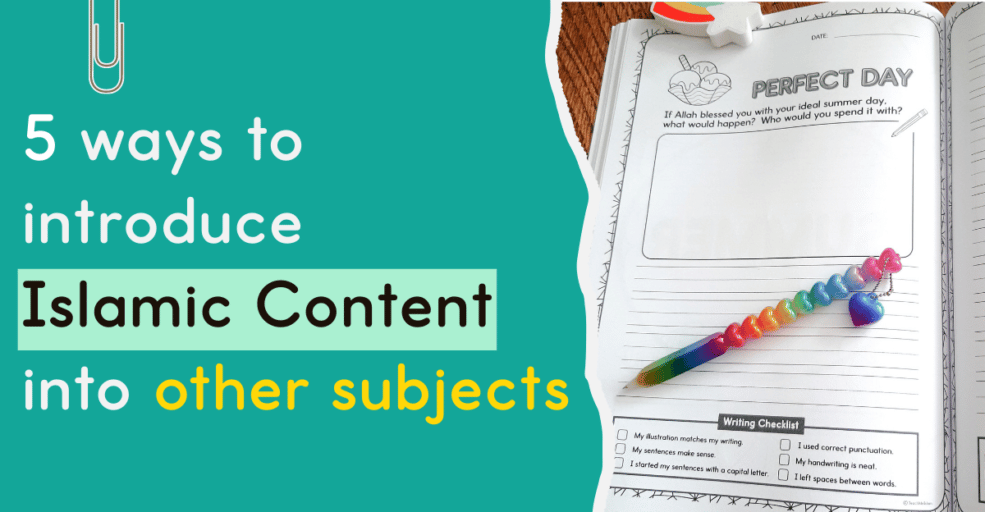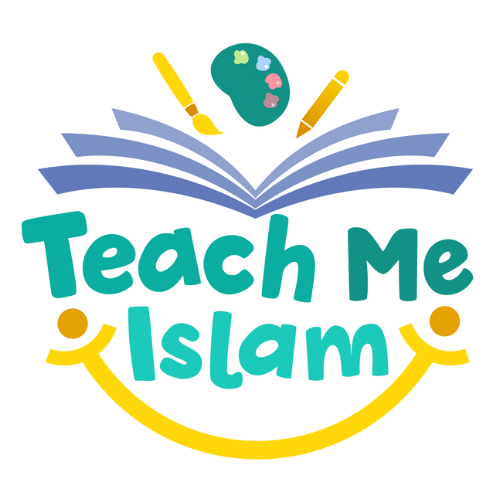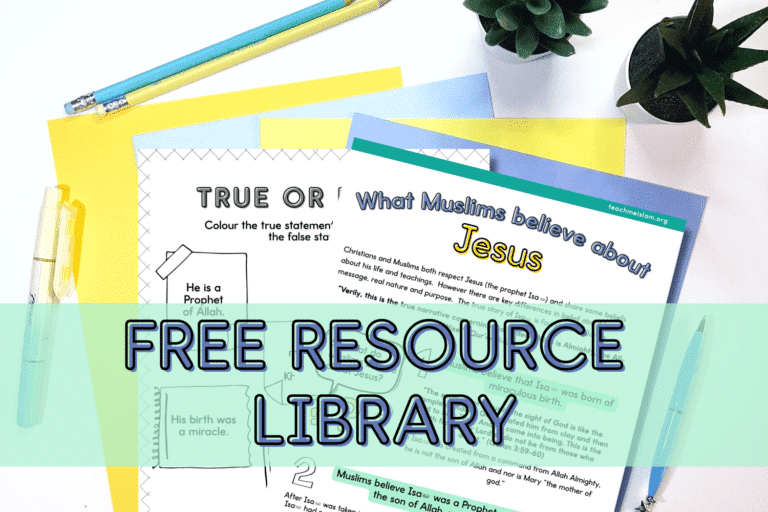There are lots of advantages to introducing Islamic content into subjects other than Islamic studies, you can learn more about that here and here. However, it isn’t always clear what are the best ways to introduce Islamic content. Here are some useful suggestions to help you decide which option is best suited for you.
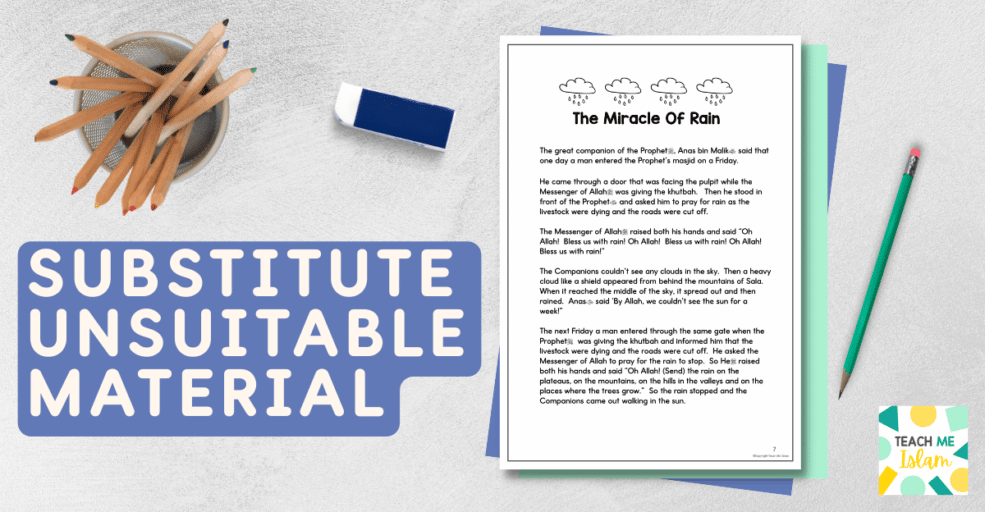
Substitute unsuitable material
This is the first suggestion because you already need to edit the material, If you have a reading comprehension passage that heavily features magic or idol worship for example, why not swap it for a passage about the unseen or the unique nature of Angels. This doubles the khair because not only are you protecting your kids from harmful material but you are educating them about Islam at the same time.
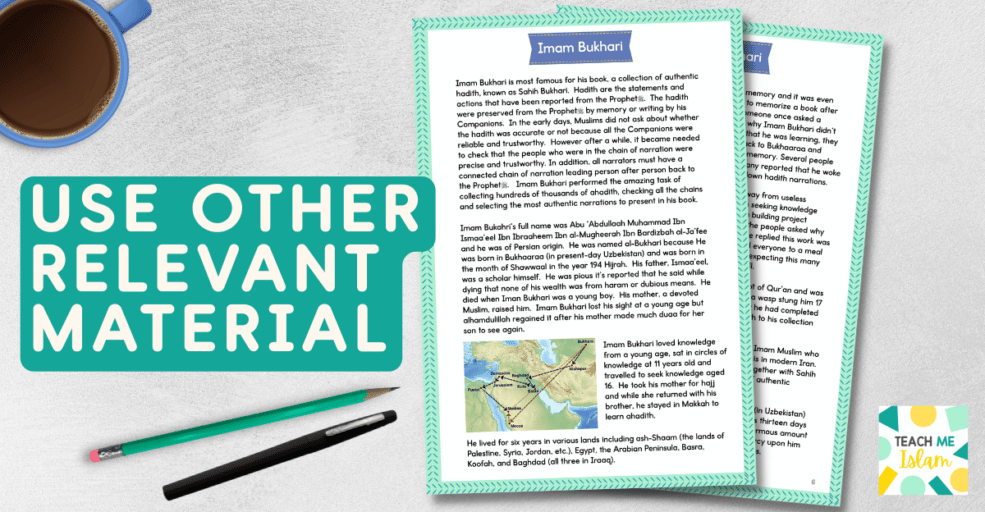
Use other relevant material
Sometimes the subject matter you are teaching is fine but you could use alternative material to maximise the benefit. An example of this would be a biography writing unit, you could add biographies of Companions as example texts and a final project about the life of a scholar. This can be alongside the educational resources you are using and not necessarily a substitute.
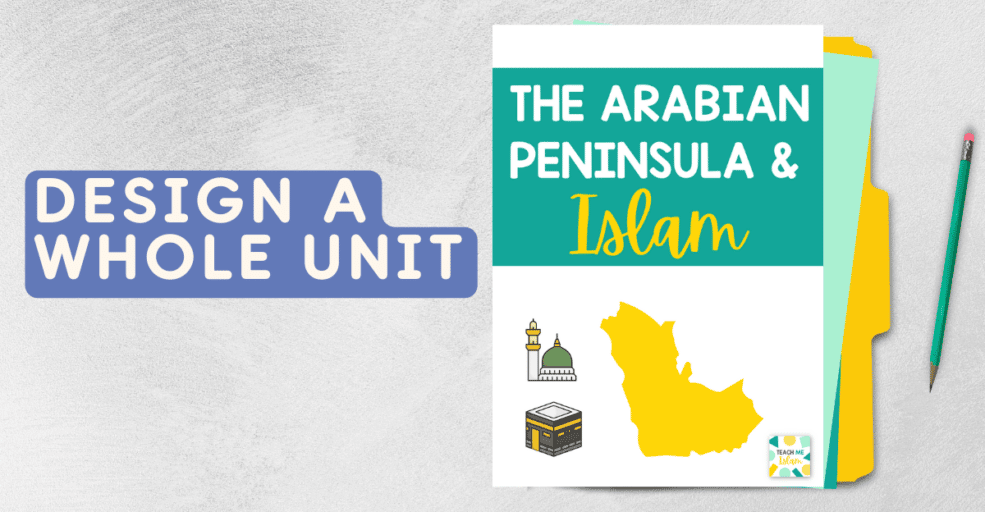
Design a whole unit
This requires the most time and effort of the ways to introduce Islamic content into your homeschool however it has lots of unique benefits. You can cater the content to fit your kids’ interests and learning styles. Plus it can cater to your teaching style, so if crafts aren’t your thing you can skip them or if you are a tech whizz then you can include online quizzes and presentations to engage your kids. Planning a whole unit also creates a cohesive educational journey.
If you don’t have time to make your own, you may be interested in the Arabian Peninsula Unit Study or Africa and Islam Unit Study. They cover a variety of topics and include lots of Islamic content presented in an engaging way with fun activities. They are a huge time saver as they include options for kids of different ages so multiple kids can learn together whilst still being challenged and engaged.
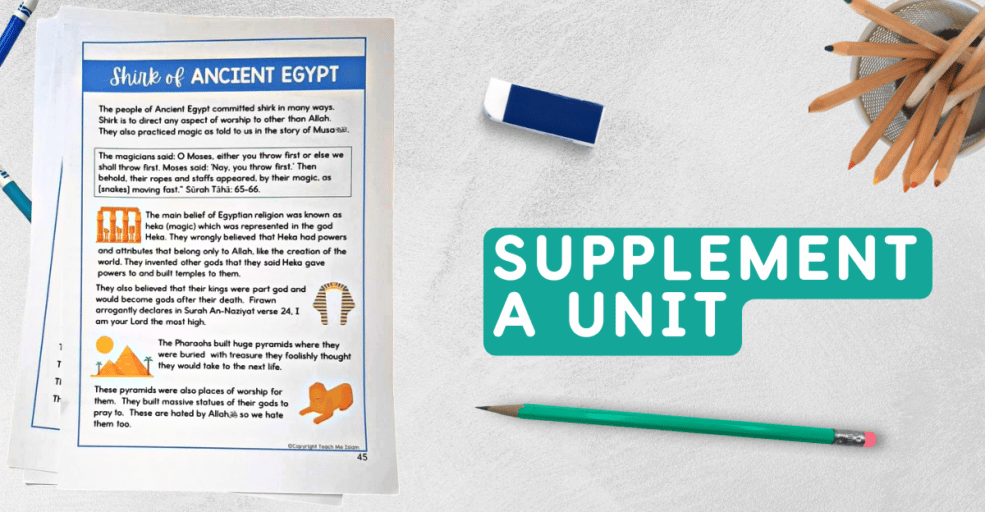
Supplement a unit
This is similar to some of the other ways to introduce Islamic content but slightly different. When you supplement a unit you teach the entire content and then add your own material for an additional lesson or two at the end. An example would be a unit study on bees and then an extra lesson on Quranic references to bees and the significance of honey as medicine in the sunnah. The Islamic content isn’t woven throughout the unit but rather added to the end. This is perfect for parents that don’t have time. It’s also great for those who don’t feel confident enough to create their own units but want to include an Islamic perspective.
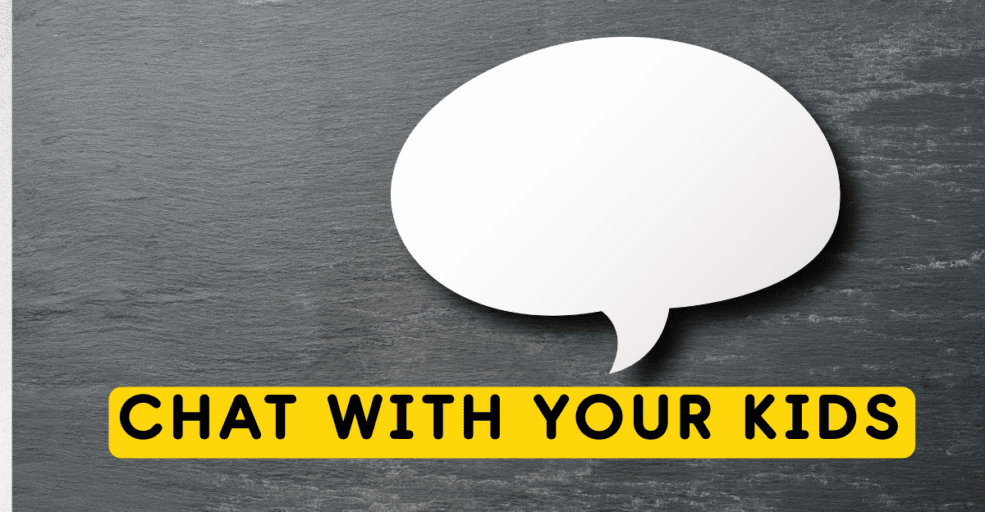
Chat with your kids
The final suggestion is simply to introduce Islamic content by talking with your kids. You can supply a Muslim perspective by mentioning Islamic concepts and ideas. If you are teaching about babies, then you can discuss the stages of their development mentioned in the Qur’an. A benefit of this is that it happens naturally and you don’t feel the need to prepare special materials which can sometimes act as an obstacle to teaching. A drawback is that the Islamic content could seem less important as it is always presented informally.
A combination of methods
I hope these suggestions of ways to introduce Islamic content were helpful to you. Ultimately the best way is the one that you are likely to use most consistently. It’s also likely that you will use a combination of methods according to you and your kids individual circumstances. A postpartum mother may favour informally chatting, whereas an enthusiastic first time mother may relish the challenge of creating their own unit. Either way, I pray that you find a way that benefits you and your family!
You can download the first lesson of the Arabian Peninsula Unit study here. It’s part of a done-for-you geography unit study that covers events from the seerah, Prophets of the Peninsula, Hajj, Makkah and Madinah virtual field trips and more!

